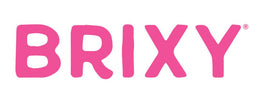How to Avoid Endocrine Disruptors in Your Beauty Products
Did you know that the beauty products you use daily could interfere with your hormones? Many personal care items contain endocrine disruptors, chemicals that can mimic or block hormones, leading to imbalances that affect metabolism, mood, and overall health. Our skin is more than just a surface, it’s our body’s largest organ, absorbing what we put on it. That’s why it’s important to be mindful of the ingredients in our personal care products, especially when it comes to endocrine disruptors.
At BRIXY, we’re committed to providing science-backed beauty solutions that help protect your skin, hair, and overall well-being. Let’s dive into what endocrine disruptors are, the common ones to avoid, and how to make healthier product choices.
What Are Endocrine Disruptors?
Endocrine disruptors are chemicals that can interfere with the body’s endocrine system, which is responsible for regulating hormones that control various bodily functions such as metabolism, growth, reproduction, and mood stabilization. These disruptors can mimic natural hormones, block hormone receptors, or alter hormone production, leading to imbalances that may contribute to serious health issues such as infertility, thyroid disorders, metabolic diseases, and even certain cancers.
These chemicals can be found in everyday products, including skincare, haircare, and cosmetics, as well as in food packaging and household items. Even in small doses, repeated exposure over time can accumulate in the body, leading to long-term health effects. Because of their ability to persist in the environment and bioaccumulate, it is essential to be mindful of the ingredients in your personal care products to minimize exposure.
Endocrine Disruptors to Watch Out For
To better protect your health, here are some key endocrine-disrupting ingredients to avoid:
· Parabens: Commonly used as preservatives in skincare, hair care, and cosmetics. They are known to mimic estrogen in the body, potentially disrupting hormonal balance. Look for “paraben-free” labels on products.
· Phthalates: Found in synthetic fragrances, nail polish, and some plastic packaging. These chemicals can interfere with reproductive hormones and are linked to developmental issues. Look for fragrance-free or naturally scented products to reduce exposure.
· Triclosan & Triclocarban: These are antibacterial agents in soaps, body washes, and toothpaste. They can disrupt thyroid function and contribute to antibiotic resistance. Choose gentle, naturally derived cleansers instead.
· Oxybenzone & Octinoxate: Chemical UV filters found in sunscreens and skincare products. They may mimic estrogen and have been linked to hormone disruption and skin irritation. Look for mineral-based sunscreens with zinc oxide or titanium dioxide.
· BPA (Bisphenol A): Found in plastic packaging, which can leach into beauty products. BPA disrupts estrogen activity and has been linked to various health concerns. Look for BPA-free packaging or solid beauty bars to avoid plastic exposure.
· Formaldehyde-Releasing Preservatives: Includes DMDM Hydantoin, Quaternium-15, Diazolidinyl Urea, and Imidazolidinyl Urea. These preservatives are used in shampoos, conditioners, and some skincare items. They can release formaldehyde, a known carcinogen and endocrine disruptor. Check ingredient lists carefully and choose cleaner alternatives.
How to Choose Safer Personal Care Products
You don’t have to compromise effectiveness to avoid endocrine disruptors in your personal care routine. Here’s how to make smarter, safer choices:
· Choose Fragrance-Free or Naturally Scented Products: Many synthetic fragrances contain phthalates, which can disrupt hormones and cause skin sensitivities. Instead, choose products that use essential oils or naturally derived botanical extracts for fragrance. Be cautious with labels and sometimes 'fragrance' or 'parfum' on an ingredient list can hide harmful chemicals. Look for products with essential oils or botanical extracts for scent.
· Read Labels Carefully: Take the time to check ingredient lists, even on products labeled as 'natural' or 'clean.' Avoid products containing parabens, phthalates, triclosan, and other known endocrine disruptors. Consider using apps like Yuka or online resources that help verify ingredient safety.
· Look for Solid or Minimal Packaging: Many plastic containers contain BPA or other endocrine-disrupting chemicals that can leach into beauty products. Choosing solid personal care products, like BRIXY’s shampoo, conditioner, and body wash bars, helps reduce plastic waste while ensuring your products remain free from harmful contaminants.
· Go for Science-Backed Beauty: Not all 'clean' beauty brands are created equal. Look for companies that prioritize ingredient transparency, perform rigorous safety testing, and use non-toxic, nourishing formulas. Research brands that openly share their formulations and avoid greenwashing tactics.
At BRIXY, we believe in formulating products that protect not just your skin and hair but your overall well-being. Our soap-free and pH-balanced bars are free from endocrine disruptors, ensuring a clean beauty routine that aligns with both your health and sustainability values.
Ready to make the switch to safer personal care? Explore BRIXY’s clean beauty collection today!
Beauty for you. Love for the planet.
XO – Team BRIXY
References:

